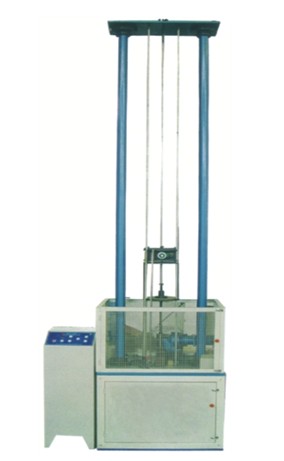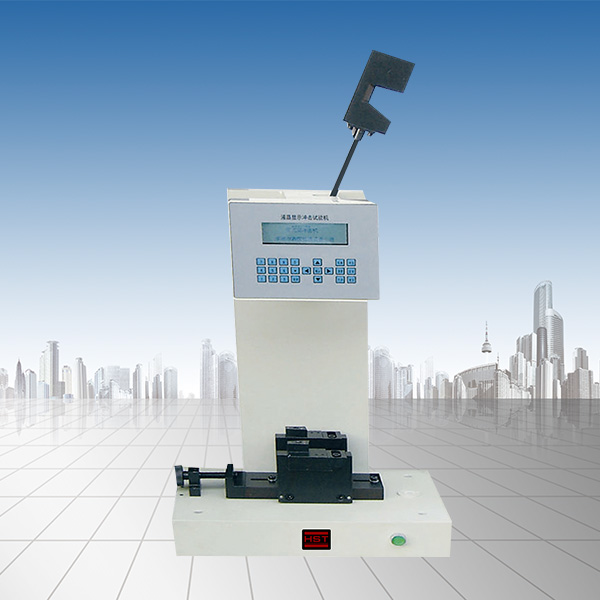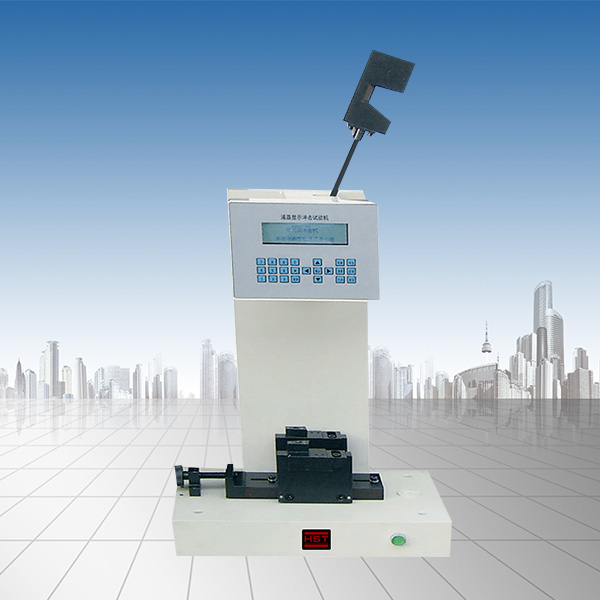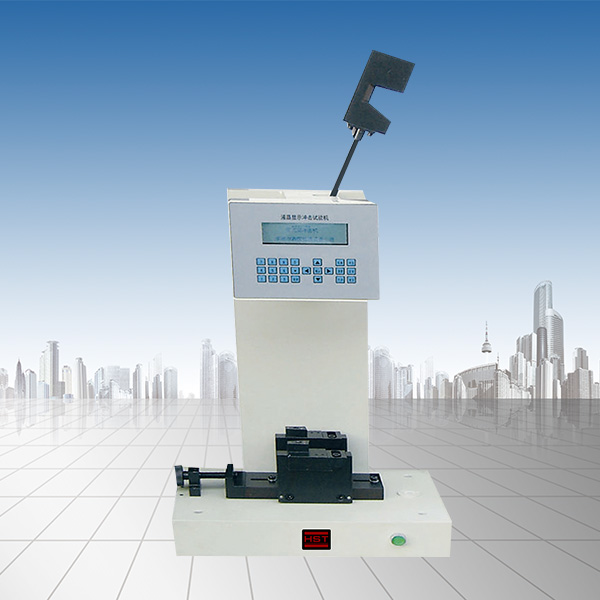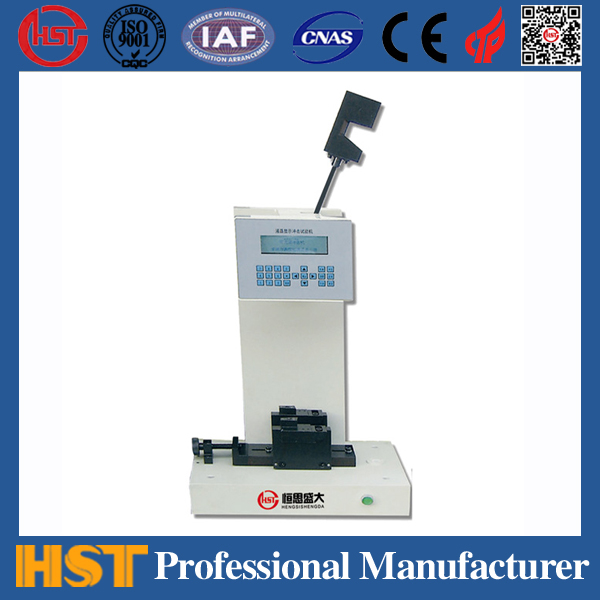Company News
Uneven tensile test of adhesive by electronic universal testing machine
Release time:2018-11-23 source:Jinan Hengsi Shanda Instrument Co., Ltd. Browse:
Universal testing machineInhomogeneity of adhesiveTensile test:
The glue joint composed of a rigid metal thick block and a flexible metal sheet butt by adhesives, when subjected to uneven tensile loads, until the sample is damaged. The tensile strength is calculated based on the loads subject to a unit bonding area. The uneven tensile test of the adhesive by the universal testing machine is characterized by the fact that although the action line of tensile stress passes through the center of the sample, the stress distribution on the bonding surface is uneven when it is subjected to stress.
Test steps
(1) Test rod and sample The test rod is a stick-shaped stick-shaped stick of a specified shape and size. The sample is a part to be tested by glueing two test rods through certain process conditions. The selection of the sample size depends on the strength of the adhesive to be tested, the full scale of the universal tester, the strength of the material of the test rod itself, and the environmental factors during the test. The metal materials used for testing rod processing include No. 45 steel, LY12CZ aluminum alloy, copper, H62 brass, etc. Non-metallic materials include laminated plastics, etc. For laminated test rods, the lamination plane should be parallel to one side of the test rod, and the pin holes on the test rod should be perpendicular to the lamination plane. The surface treatment, glue coating and sample preparation process of the test rod should comply with the product standards. When glueing the sample, it is better to have a slightly round of fine glue stems around it. There is no need to remove it at this time. If the remaining glue needs to be removed, it should be done after curing.
(2) Test Under normal conditions, the short parking time between the sample preparation and the test is 16 hours, the length of 1 month, and the non-metallic sample is parked for at least 40 hours. The sample should be parked for more than 30 minutes in the test environment, installed on the tensile tester fixture, and tested its damage load. The electronic universal tester tester should make the sample be destroyed within (60±20)s; sometimes, the mechanical universal tester uses a tensile speed of 10mm/min.
Summary: When the bonded joint is subjected to stress perpendicular to the bonding surface, the stress distribution is much more uniform than the shear stress. However, according to theoretical speculation and stress distribution tests, there is also stress concentration at the edge of the tensile joint. Therefore, it can be shown that the size and modulus of the bonding specimen, the thickness of the adhesive layer, and the modulus of the adhesive all affect the stress distribution coefficient at the edge of the joint, and therefore it will inevitably affect its strength value. Like tensile shear samples, loading speed and sample temperature also affect tensile strength. In addition, the tensile strength test values of different diameters of samples are different, and they are large in discrete, and the values of samples with the same diameter are more than 50% higher than the small value. For square samples, due to the different distances from edge to center point, the stress distribution is even more uneven, so only "approximate" tensile strength values can be measured with square samples. Secondly, for the tensile strength, as the thickness of the glue layer increases, the strength of its bonding joint decreases. The thinner the glue layer, the greater the strength.
Cracking test of universal testing machine in adhesive:
The asymmetric tensile test of adhesives is also called splitting test using a universal testing machine, and the strength it tests is called splitting strength. The determination of uneven tensile strength of the universal testing machine reflects the toughness of the adhesive to a certain extent, and therefore it can also reflect the sensitivity of various bonding materials to the concentration of stress on the joints.
Principle: The sample is a docking structure. The tension force perpendicular to the bonding surface of the sample is applied to the edge of the bonding surface, and the load subject to the sample is measured when it is separated is measured, and its split strength is expressed by the separation force required per unit bonding width.
Test steps
1. Sample preparation is stipulated according to the technical conditions of the adhesive. The glue joint of the metal block should be flat and should not bend, skew, or other deformation. The glue joint should have no hair and the edges should be kept at right angles. The material is LY12CZ aluminum alloy or No. 45 steel. The fixture for clamping the sample should be equipped with an automatic adjustment device so that the stress-bearing line is perpendicular to the glue joint of the sample during loading. The sample is prepared for a short time of 16 hours and a length of 1 month.
2. The test should be carried out at a standard temperature (23±2)℃. If the test requires strict temperature and humidity or arbitration test, it should be tested at a temperature (23±2)℃ and relative humidity 45%-55%. If only temperature is required, the sample will be parked at a standard temperature for 0.5h. If a standard test environment is required, it should be parked at a range of temperature (23±2)℃ and relative humidity 45%-55% for at least 16h.
3. Start the universal testing machine and load at a loading speed of (5±1)mm/min to record the load of the sample split failure and the type and percentage of the plastic part failure.
4. Take at least 5 samples for testing for each adhesive, and use the small value, value and average value as the test result, and the value is 3 effective numbers.
5. Before testing, use a caliper to measure the length and width of the overlapping surface of the adhesive layer. Then the sample was installed in a special tool for a tensile tester and conducted a tensile test. The tensile speed was 10 mm/min until the glue layer was destroyed. There should be no less than 5 samples per group. The arithmetic average value should be taken as the test result, with the allowable deviation (±15%) and 3 valid numbers should be retained.
Summary: The metal used for processing test blocks can be semi-hard tempered brass, hard tempered copper and phosphorus copper, tempered aluminum alloy and cold rolled steel. The asymmetric tensile strength has a very obvious impact on the sample due to the overlap length. The shorter the length L of the sample, the smaller the asymmetric tensile strength. The effects of temperature, adhesive layer thickness, and adhesive properties are the same as those of glass strength. Cross-lap tensile strength test The sample uses cross-lap specimen, also known as cross-shaped specimen, and the tensile strength it tests is uniform tensile strength. The specimen is made of metal plates and strips.http://www.hssdtest.com/
Recommended productsPRODUCTS


















